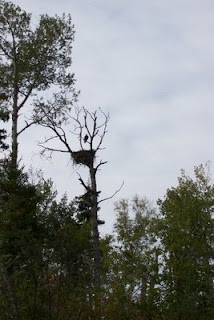

The second-most important piece of equipment any angler on a Canadian fishing trip should have is excellent-quality rain gear.
The first is a proper-fitting life vest. We supply life vests as part of our fishing packages at Bow Narrows Camp but we still suggest you bring your own just because you will be more inclined to wear one that you know and like. (See Your Most Important Fishing Gear)
You need to bring your own rain gear and we strongly suggest you get the best.
Gore-Tex and similar waterproof, breathable fabrics are superior to non-breathable rain gear because you don't sweat in them. This is important because your rain gear is also your first line of defence should you encounter cold weather too. You need something to break the wind but which keeps you dry from rain, spray and sweat.
From what we've seen the ultimate in rain gear is Cabela's Guidewear. Everyone who has brought this to camp has reported it to be excellent.
Of course you need both jacket and pants.
However, Guidewear is probably also the priciest rain gear on the market. It's too expensive for me, in fact.
Here's an update from 2011. For two years now I've been wearing Cabelas DryPlus rainwear and have found it to be excellent. This is about one-half the cost of the GoreTex Guidewear.
It breathes well and is comfortable in cold weather. It is absolutely waterproof and it is tough as well. I've worn mine in the bush while cutting firewood and nothing got torn or had sticks poked through it.
I just point this out to illustrate that you can get very good rain gear for less expense if you want.
All of the breathable-fabric jackets and parkas have adjustable cuffs which helps keep water from running up your sleeves when fishing.
If for some reason you don't want the breathable fabrics then get commercial grade rainwear worn by such people as highway and utility workers. It's not cheap either.
The very last option is to buy a set of vinyl or PVC rain gear. This is better than nothing but just barely. You can expect the seat or crotch of the pants to split and the rain to run down the sleeves and in the neck. It makes you sweat inside, so if you wear it for more than an hour you will get cold.
Finally, don't forget to bring either rubber or waterproof boots. Nothing's worse than having cold, wet feet.
















